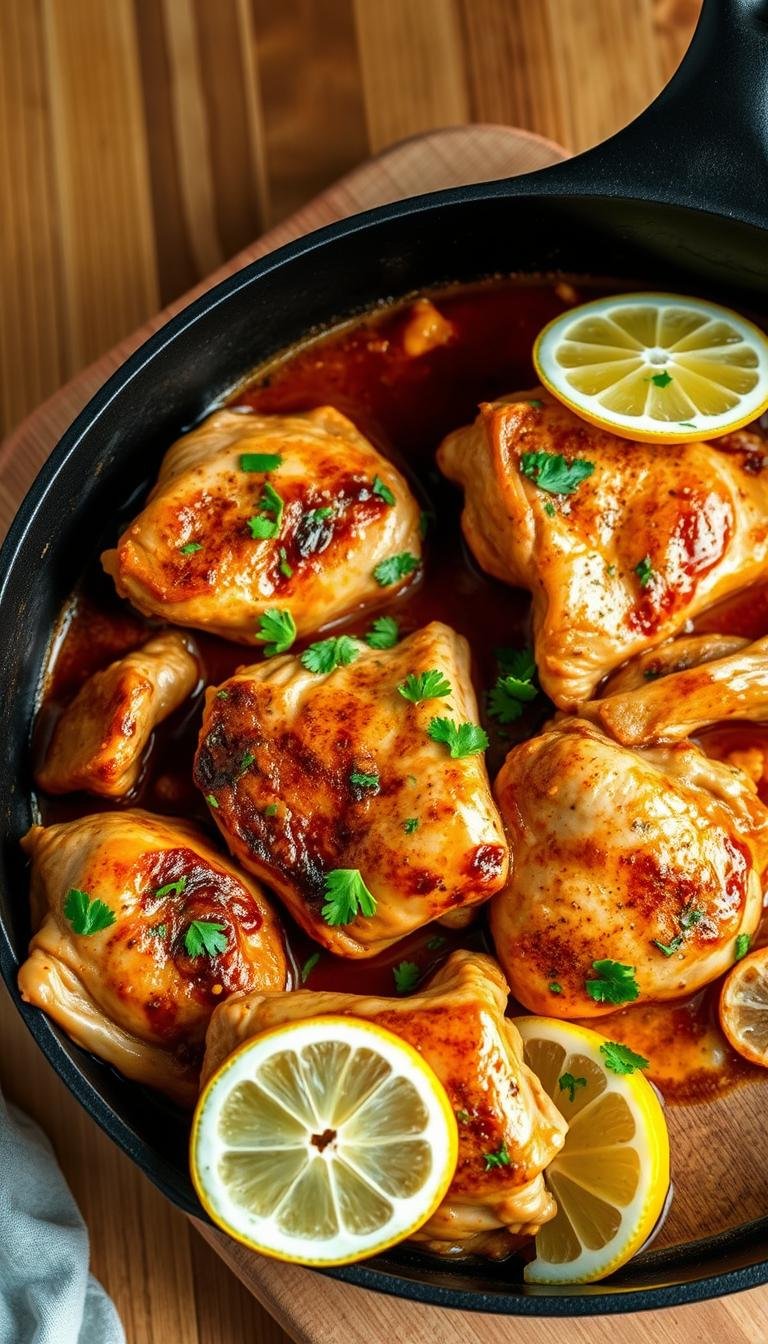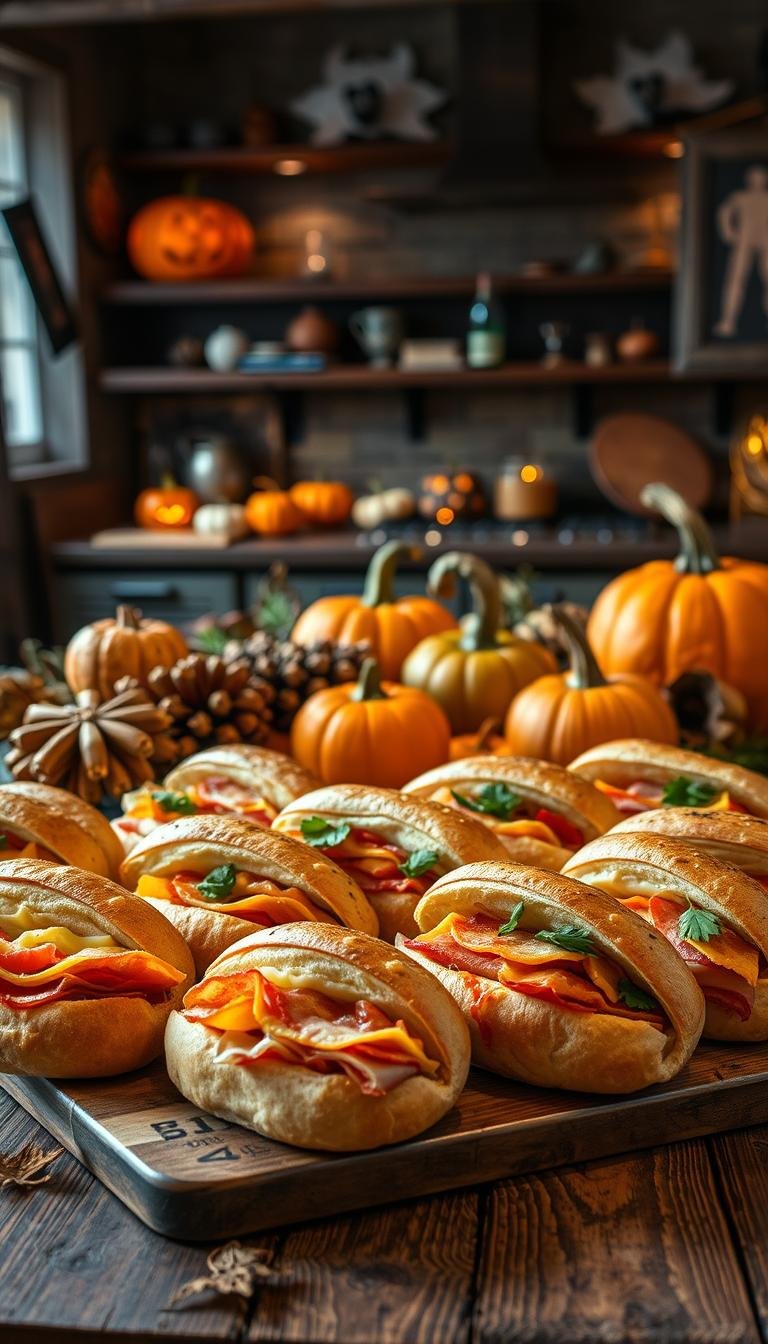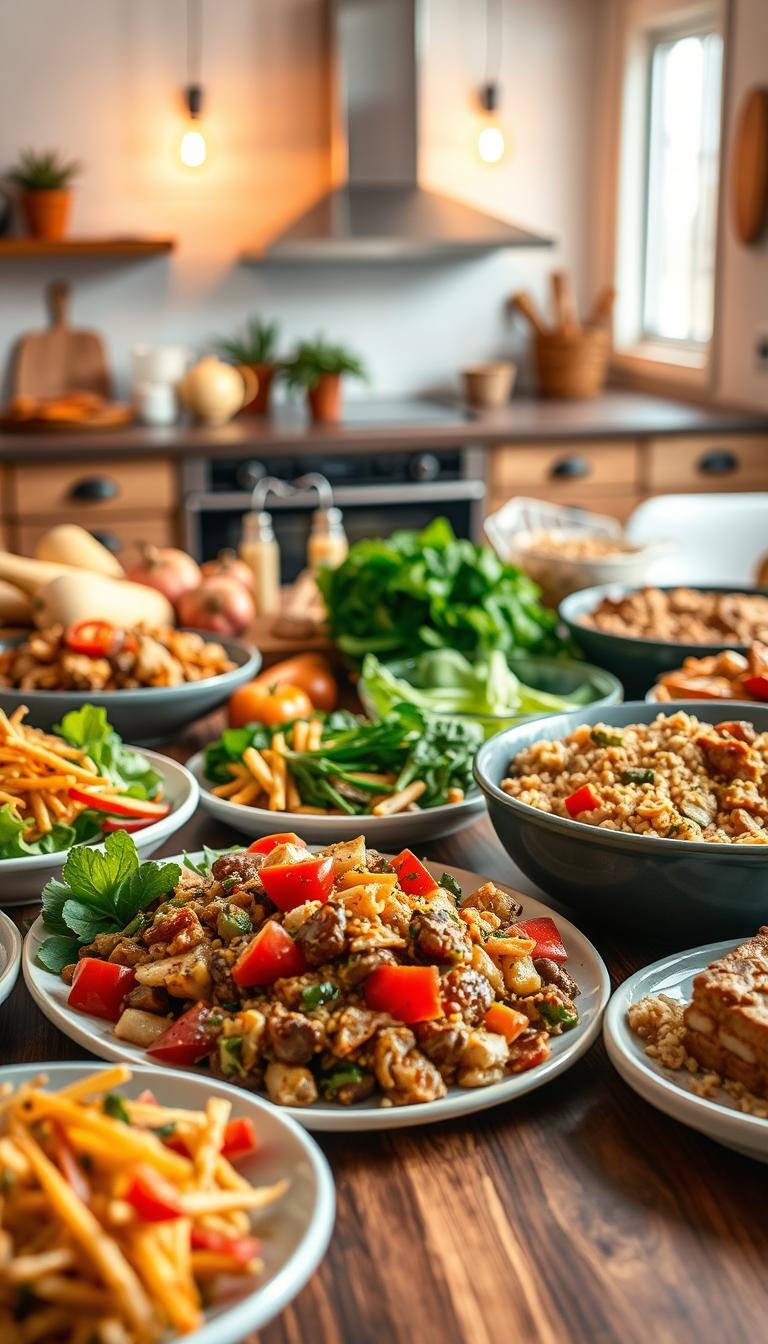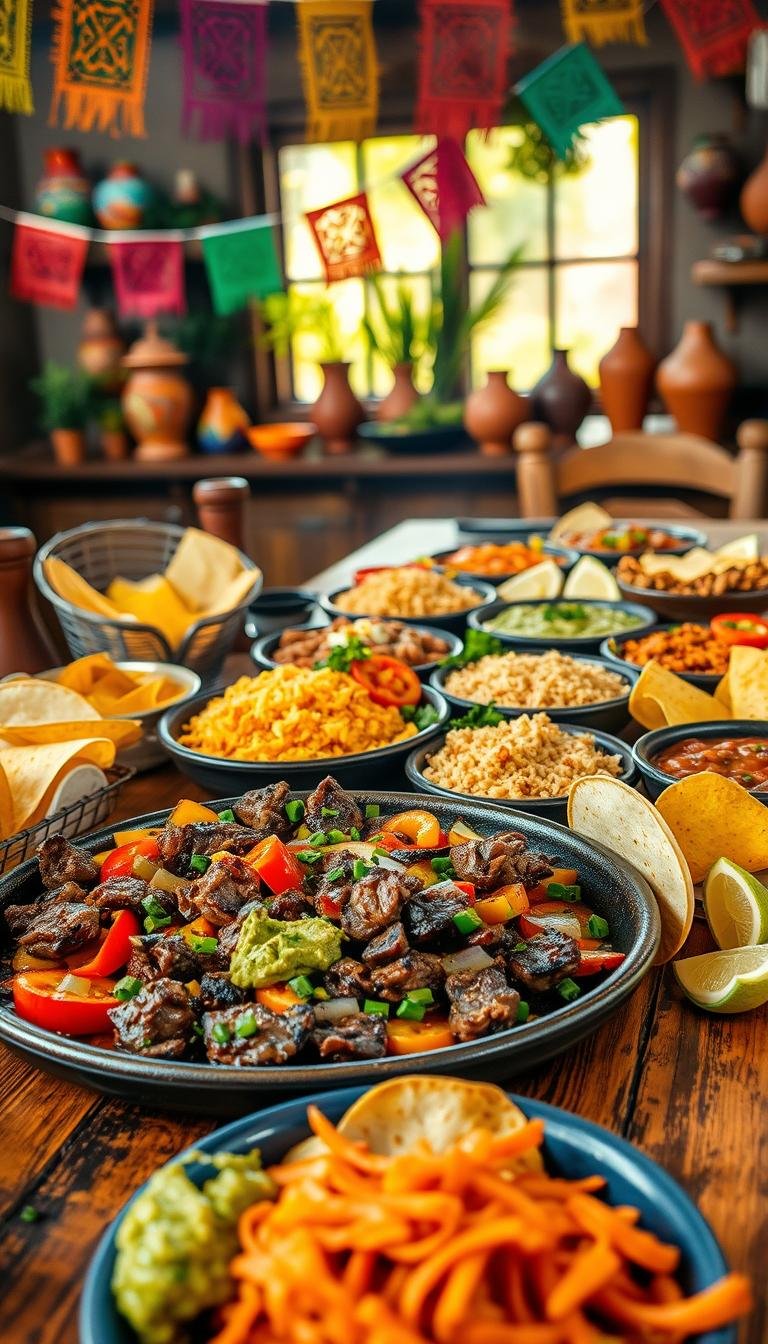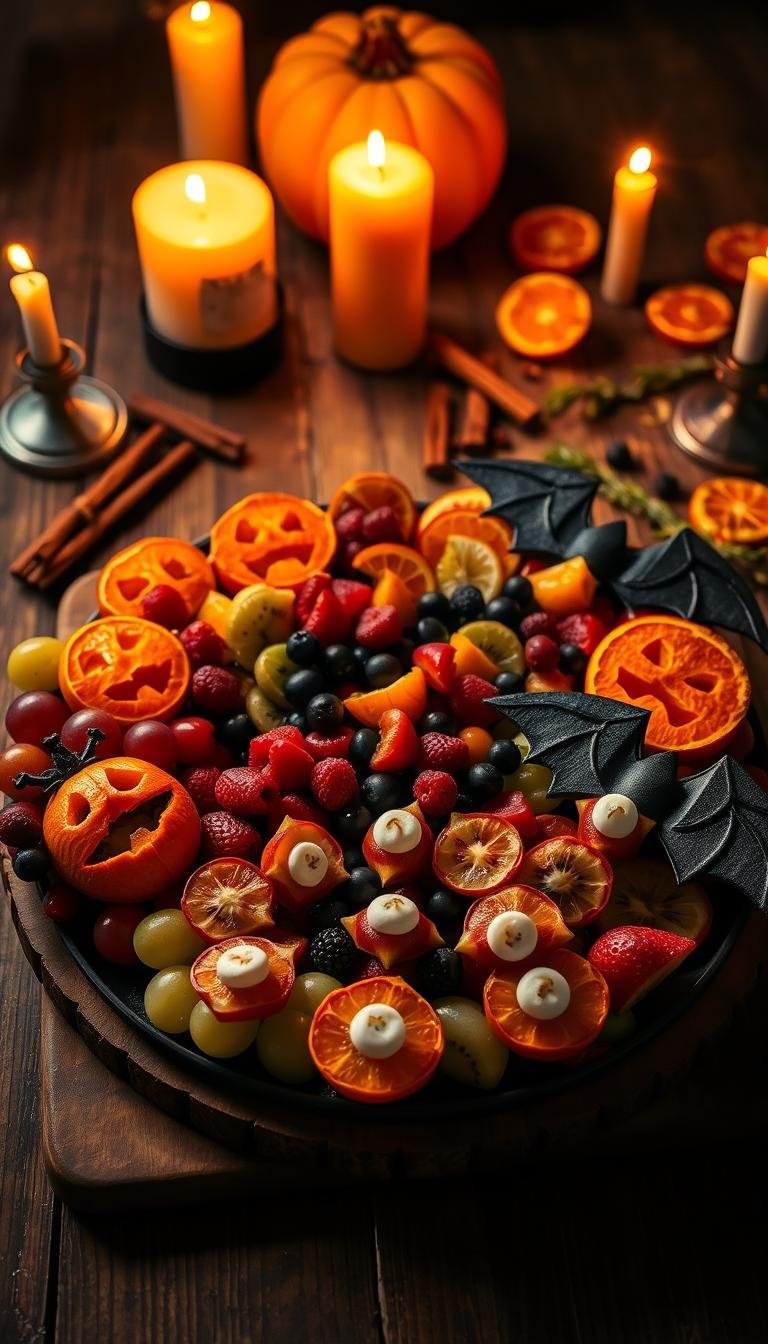Boneless Skinless Chicken Thigh Recipes: Easy & Delicious Ideas
Surprising fact: more than half of home cooks report easy oven methods deliver juicier results than pan-searing for weeknight meals.
This guide shows how a simple olive oil and spice rub plus a 400°F bake for about 30 minutes makes a consistent, flavorful main. Use kosher salt, black pepper, garlic and onion powder, smoked paprika, cumin and a pinch of cayenne for big results with little fuss.
Choose a 9×13-inch baking dish to lock in moisture. A sheet pan works too, but it may dry out the meat a bit. Leaving a touch of visible fat helps flavor and keeps the interior tender as it renders.
Plan ahead: the same batch makes a hot dinner and easily converts into salads, wraps, or pasta lunches. Reheat gently (50% microwave power or 350°F oven) and always check doneness with an instant-read thermometer—165°F at the thickest part.
Key Takeaways
- Quick, reliable method: 400°F for ~30 minutes gives juicy results.
- Use a basic olive oil and spice rub from pantry staples.
- 9×13 dish retains moisture better than a sheet pan.
- Leftovers store 3–4 days and make versatile meals later.
- Always confirm 165°F with an instant-read thermometer.
Why boneless skinless chicken thighs are a weeknight winner right now
Simple methods turn humble thighs into a fast, flavorful weeknight main. They ask little prep and deliver big returns. A quick toss in olive oil and a bold dry rub creates savory crust with hardly any fuss.
Typical time in the oven is modest—about 30 minutes at 400°F for a reliable bake. For more char, try a 425°F bake followed by a 7–10 minute broil to caramelize the top without flipping.
Marinated, broiled versions cook fast. A honey-soy method needs a 1-hour soak, then about 10 minutes per side under high broil for glossy, sticky edges. Leaving a bit of surface fat helps protect moisture under direct heat.
- Low prep, high value: stretches across meals and saves time.
- Versatile finish: bake, broil, or grill for different textures.
- Quick checks: pieces vary in size—use a thermometer to hit 165°F.
| Method | Temp | Minutes | Best for |
|---|---|---|---|
| Bake | 400°F | ~30 | Steady, even cooking; easy weeknight main |
| Bake + Broil | 425°F then broil | Bake 20–25, Broil 7–10 | Caramelized top without flipping |
| Broil (after 1-hr marinade) | High broil | ~10 per side | Sticky, glossy marinades like honey-soy |
| Grill | Medium-high | 8–12 per side | Smoky char and fast sear |
Core methods and base seasonings for juicy chicken thighs
A well-built dry rub plus a slick of oil is the fastest route to consistent moisture and flavor.
Make the base: drizzle olive oil over the pieces, then rub on kosher salt, black pepper, garlic powder and onion powder, smoked paprika, cumin, and a pinch of cayenne. Coat evenly with your hands so the spices stick and form a savory crust during cooking.
For steady results, set the oven to 400°F and plan about 30 minutes in a 9×13-inch baking dish. This moderate baking time cooks through while holding juices.
If you want more char, raise heat to 425°F and finish under the broiler for 7–10 minutes to caramelize the top without flipping. A foil-lined sheet pan encourages extra surface browning.
Choose cookware with purpose: the dish traps steam and keeps the interior tender, while a sheet pan gives better crust at the cost of slight drying.
Leave small areas of visible fat intact. As the fat renders it bastes and protects the meat from drying out, adding flavor and richness.
| Step | Temp | Why it matters |
|---|---|---|
| Base rub + oil | Room temp | Spices adhere and form a crust |
| Bake | 400°F ~30 min | Even cooking, juicier result in a dish |
| Bake + broil | 425°F then broil 7–10 | Caramelized top without flipping |
- Space pieces on the pan so air circulates and browning improves.
- Target an internal 165°F reading in the thickest part for safety.
- Keep ingredients pantry-friendly so the recipe stays quick on busy nights.
boneless skinless chicken thigh recipes you’ll make on repeat
Simple shifts in spice and finish turn the same basic cooking time into distinct weeknight meals. Below are three fast, repeat-worthy approaches that use pantry ingredients and short cook times for consistent results.
Easy baked spice-rubbed thighs
Coat pieces with olive oil, kosher salt, black pepper, garlic powder, onion powder, smoked paprika, cumin, and a pinch of cayenne. Arrange in a 9×13-inch dish and bake at 400°F for about 30 minutes for juicy, evenly cooked chicken.
Asian-inspired honey-soy broiled thighs
Marinate for 1 hour in soy sauce, sesame oil, rice vinegar, honey, minced garlic, and ground ginger. Broil on a foil-lined sheet about 10 minutes per side and spoon pan sauce over the meat before serving for a lacquered finish.
Balsamic-chili baked with a caramelized top
Whisk olive oil, balsamic vinegar, chili powder, cumin, garlic powder, and paprika. Bake at 425°F for 15 minutes, then broil 7–10 minutes until edges are sticky and charred. Rest 5–10 minutes, then brush with pan juices for shine.
- Tip: Pat pieces dry and avoid overcrowding so high heat can caramelize the exterior.
- Scale: All three methods scale for meal prep and pair well with rice, greens, or grain bowls.
| Style | Marinate | Heat | Finish |
|---|---|---|---|
| Spice-rubbed bake | No | 400°F | Bake ~30 minutes |
| Honey-soy broil | 1 hour | High broil | ~10 minutes per side, spoon sauce |
| Balsamic-chili | No | 425°F then broil | Bake 15, broil 7–10, rest & brush |
Serving suggestions and side dishes that match the heat
Plan sides that cook alongside the main to cut hands-on time and boost flavor. Roast vegetables at 400°F with the main to save effort and build depth. A mixed sheet-pan veg roast or broccoli takes roughly the same minutes and adds color and texture.
Quick stove options work when you need speed. Quick-fry broccoli in a skillet with olive oil, a pinch of salt, and garlic powder until edges brown but stalks stay crisp. Sautéed mushrooms or zucchini noodles also soak up pan juices and finish in minutes.
Balance with grains and greens. Cook quick quinoa or rice while the oven runs to make a hearty bowl. Toss arugula or spinach with a tangy vinaigrette for a bright salad that cuts richness.
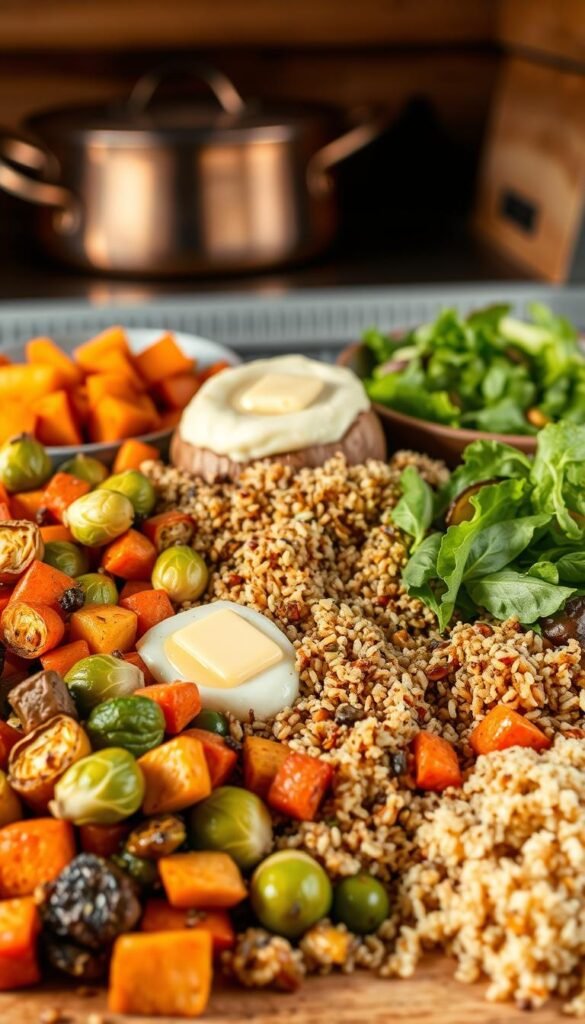
| Side | Method | Time | Why it works |
|---|---|---|---|
| Roast broccoli | Oven at 400°F | 15–20 minutes | Pairs with main, adds crisp edges |
| Quick-fry broccoli | Skillet with olive oil & garlic | 5–7 minutes | Crisp-tender, fast |
| Rice or quinoa | Stovetop or quick pot | 12–20 minutes | Builds a filling bowl |
| Arugula or spinach salad | No-cook, toss with vinaigrette | 2–3 minutes | Bright contrast to rich mains |
Pro tips for flavor, texture, and timing
Nailing a few practical habits will keep meat juicy and deeply flavored every time. Follow simple checks rather than relying on minutes alone to avoid overcooking.
Use a meat thermometer: pull the pieces at an internal 165°F in the thickest part. This prevents undercooking while stopping you from overshooting and drying out the protein.
- Don’t overcrowd the pan: give each piece breathing room so it roasts instead of steaming and develops brown edges.
- Broil for char: switch to high broil for 7–10 minutes to caramelize the top. Rest 5–10 minutes, then brush with pan juices or sauce to rehydrate and add shine.
- Salt type matters: Diamond Crystal kosher is less dense than Morton; if swapping, use about half as much fine or Morton salt to avoid over-seasoning.
- Pat pieces dry and add a thin coat of olive oil so pepper and other spices stick and brown better during baking or broiling.
“Watch temperature, not the clock — size varies and a thermometer is your best timer.”
Leftovers, meal prep, and storage for busy days
Smart storage makes weekday lunches and quick dinners much easier. Cool the cooked pieces quickly, then move them into an airtight container to lock in moisture and flavor.
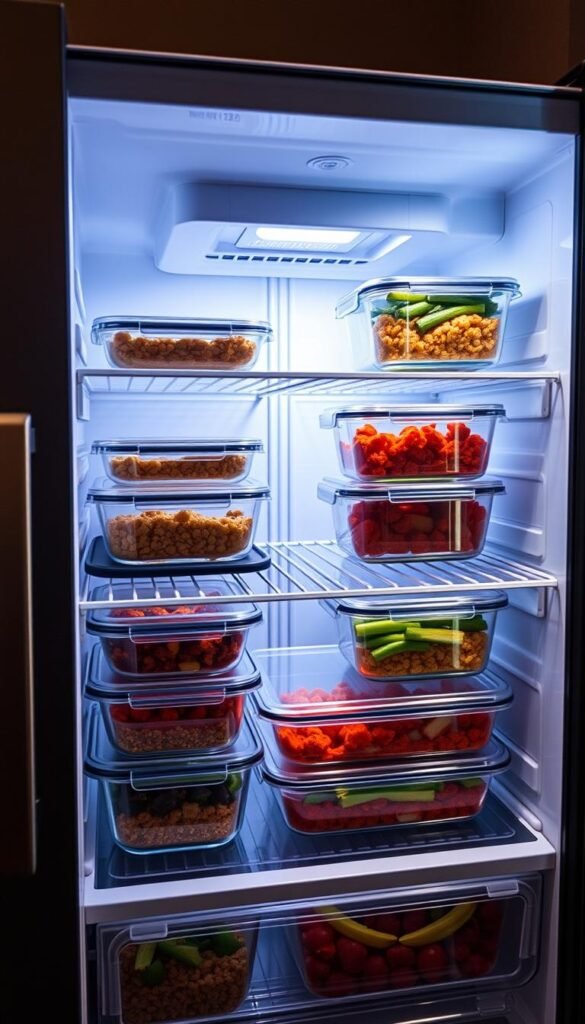
Fridge life: Store in the fridge for 3–5 days in a sealed container. Many cooks prefer enjoying cold pieces in salads and bowls to avoid drying during reheating.
Gentle reheating
Reheat on 50% microwave power in a covered container for short bursts, checking every minute to avoid hot spots. Or warm in a 350°F oven until just heated through for a hands-off approach.
Freezing and thawing
For longer storage, freeze cooled portions in single-serve containers or freezer bags for up to 2–3 months. Thaw overnight in the fridge before reheating to keep texture tender.
- Slice or shred before chilling to reduce prep for wraps and bowls.
- Keep sauces separate and add after reheating to preserve brightness.
- If reheating sauced pieces, brush with a little pan juice or broth to restore sheen.
- Label containers with date to manage rotation and avoid waste.
| Storage | Where | Length |
|---|---|---|
| Ready to eat in fridge | Sealed container | 3–5 days |
| Frozen portions | Freezer-safe container | 2–3 months |
| Thawing method | Refrigerator overnight | Several hours |
“Plan portions and chill promptly—small steps keep meals tasting great all week.”
Nutrition and protein snapshot
These cuts pack concentrated protein and modest fat into a small, satisfying portion.
A typical serving from a 2-pound batch ranges roughly 254–449 calories and about 26–47 grams of protein depending on oil, sauce, and seasoning. That protein density makes this a smart anchor for balanced weeknight plates.
Why the higher fat matters: the darker meat contains a bit more fat, which bastes the piece as it cooks. That extra fat reduces the risk of drying and keeps the texture tender compared with leaner cuts.
- Expect substantial protein per serving—easy to hit targets when prepping by weight.
- Calories vary with added oil and sweeteners; trim those to lower totals.
- Use a thermometer to remove meat at 165°F to protect texture and nutrients.
- Pair with fiber-rich sides like roasted veggies or whole grains for balanced macros.
“Measure portions by weight to keep protein goals consistent across meals.”
Conclusion
With basic spices, a dash of heat, and a quick bake or broil you can create consistent weeknight winners.
Pick the way that fits your time: bake at 400°F for about 30 minutes for a reliable, spice-rubbed result, broil honey-soy after a 1-hour marinade about 10 minutes per side for glossy sauce, or bake at 425°F then broil 7–10 minutes for a balsamic-chili finish. Use a 9×13-inch dish to lock in moisture or a foil-lined sheet pan to chase extra browning and crisp edges.
Store cooled leftovers 3–5 days in an airtight container in the fridge. Reheat gently or enjoy cold in a bowl or salad. Follow these small steps and you’ll have a quick, easy meal plan that keeps flavor high and stress low.
